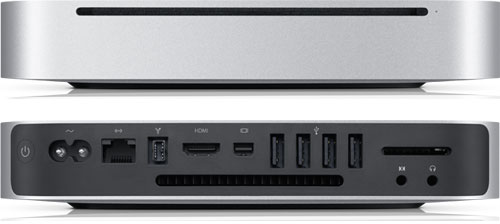Is the Apple Mac Mini about to get the “Pro” treatment in 2016?
Will Apple make the Mac Mini Pro? No. Not a chance of that happening. With that said, a better chance is looming on the horizon for a Mac Mini whose name will be the only thing “Mini” about it.

In the wake of Apple registering the Mac Mini as an official US trademark, those who feared that the Mac Mini would be another product line on the chopping block, can safely breathe again, as rumors hint to a leaner and meaner, future version of the tiny computer, with specs that promise a “great VR experience”.
With that said, why the “sudden interest” in VR by Apple? Why does Apple suddenly care about video games and virtual reality? Mac computers, after all, are very business-oriented machines, and everything about the Mac OS X is geared towards user experience and, most of all, productivity, which has secured Apple a permanent seat in the “It just works” category.
What’s going on with the Mac Mini?
The Mac Pro, (We’ll get to the Mini in a minute) which was regarded by contemporary reviewers as the ultimate in high performance computing of 2012-2013, has also been considered Apple’s peak of interest in high-end computing, after which the tech giant’s direction shifted to a mostly consumer-centric focus, with the iMac Retina, and the MacBook Pro setting the bar of how powerful Mac products need to be for both regular consumers and power users.
The problem with that grey area that starts from regular consumers and ends with power users, is that it’s so wide, and so complex, that it’s easy to miss certain demographic segments hungering for a little extra in the hardware specs department.
The Mac Mini has the form factor, flexibility, and the right following, to make a killing, with the right upgrades, and according to a recent report, AMD’s brand new and “insanely powerful” Polaris GPU, is slated to be part of the next generation Macs, as early as this year, most likely in the Fall.
Intel has recently unveiled Skull Canyon NUC, a new powerful gaming PC with a form factor approximately aligned with the Mac Mini, and powered by a new Intel Core i7 6770HQ, as well as an Intel Iris Pro Graphics 580, which is more powerful than the one powering the MacBook Retina, with support for 4K resolution.
Considering that this PC is planned to cater heavily to gamers who might like to get a better gaming experience, without spending upwards of thousands in an MSI or Asus gaming laptop, Apple’s interest in raising the bar in GPU performance is well justified, as that could mean an extra option for gamers, and high-end users to explore, and for Apple, extra market share made of a demographic that has been historically PC-bound, but never necessarily in love with versions of Microsoft Windows prior to Windows 10.